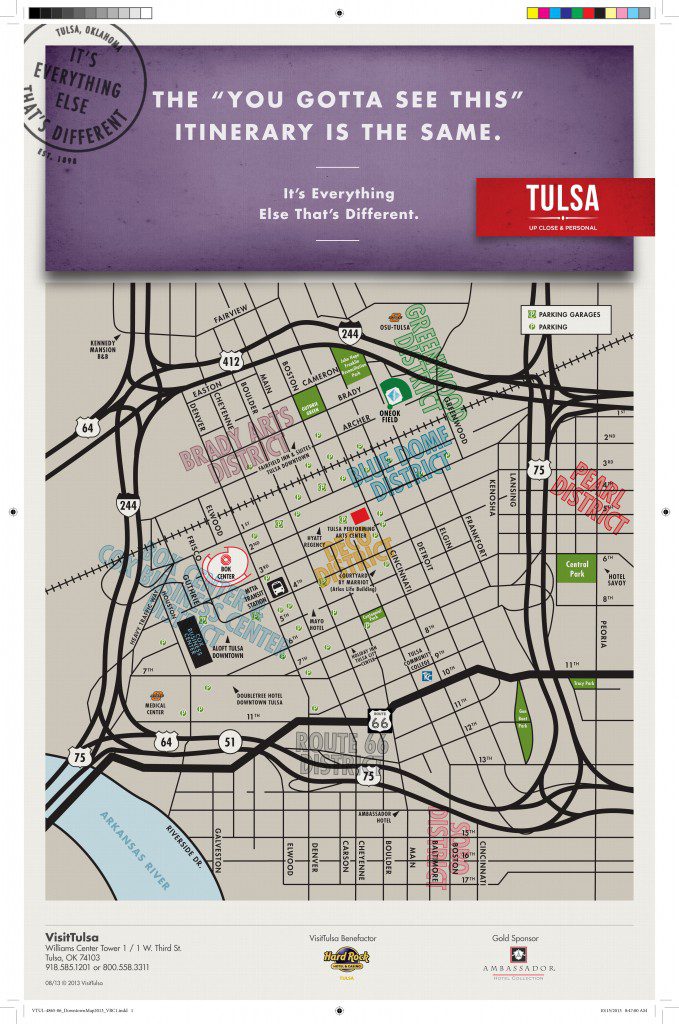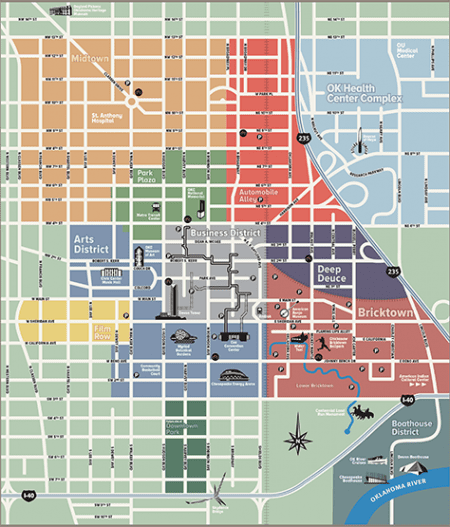
Keeping Balance
While businesses and residents eagerly anticipate the much-hyped renovations of Oklahoma’s metropolitan downtowns, much like the course of true love, the path to urban development never did run smoothly. City planners and engineers in both Tulsa and OKC will be tackling the logistics of altering their cityscapes for years to come.
In Tulsa, city officials and businesses alike are facing some of the same problems that recently disrupted downtown OKC during Project 180 and the construction of the Devon Energy Center (and had long-term impacts on some downtown business owners).
“Some of the challenges of working downtown include maintaining business access, working around existing utilities and minimizing disruption to large events,”
Zachary says.
According to Dawn Warrick, planning and development services director for the City of Tulsa, impact on existing downtown businesses is of the utmost consideration.
“Managing how we stage construction projects while maintaining access to open businesses and venues is a challenge, but a very welcome one,” she says. “We are working to identify tools and programs that will encourage additional growth in all of our downtown districts and neighborhoods. Our infrastructure is the skeleton that supports the entire community, and downtown is no different. Tulsa offers a robust street grid downtown, and core services generally follow the grid. Most downtown properties have ready access to utilities. Maintaining our older infrastructure and ensuring those facilities can accommodate new growth is the real challenge. We are also beginning to explore other facilities that could be considered amenities but have become extensions of the downtown infrastructure in most major cities, such as parking systems, mass transit and access to high-speed Internet.”
Downtown is the literal heartbeat of any city and region, says Tom Baker, manager of Tulsa’s Downtown Coordinating Council.
“Having a broad-based group of those [who are] personally invested in both downtown and, therefore, the region insures real-life opinions and direction when setting service and improvement priorities for downtown,” Baker says.
The Order of Things
In Oklahoma City, it’s not just an influx of construction that is affecting the infrastructure and businesses downtown; it’s also the growing number of residents. With the building of multiple dwellings in Midtown, Deep Deuce and soon Bricktown, as well as the construction of a downtown elementary school, planners are facing shortages of parking in high-traffic areas. Additionally, there is a notable lack of grocery stores and other amenities, such as pharmacies and gas stations, expected by and necessary to retain the growing residential population.
Kirkpatrick says that infrastructure progress of this nature may seem slow, but it’s under way and gaining ground.
“Due to the way we fund infrastructure on the municipal level, it will probably always feel to some residents like there is a lag in infrastructure keeping up with development,” Kirkpatrick says, explaining that Oklahoma City’s infrastructure is often funded by general obligation bonds that only occur every seven to 10 years and take additional years of planning before implementation.
According to Kirkpatrick, alternatives to general obligation bonds are becoming more common through measures like tax increment financing (like the initiative that funded Project 180) and members of the private sector stepping up to address the needs of downtown’s growing resident population, such as with the funding of “quiet zones” at railway intersections from Sixth to 16th streets.
“Increased density, particularly residential density, does definitely have its advantages,” Kirkpatrick says. “I frequently hear OKC Millennials asking for a better transit system and for better retail, both citywide and in downtown. I do not think many people understand, however, that transit and retail become more feasible as residential density increases. In reality, most of the redevelopment we have seen on downtown ground floors has been restaurants and that is to be expected if we are still working off the model of trying to draw people from other parts of the region to downtown; but as we get more people above those ground-floor spaces, there is a bigger captive audience, and we should expect to start to see an increase in true soft-goods retailers – the sort of shops that people get really excited about. We are already seeing some of these pop up along Automobile Alley, which is why Downtown OKC was such a big proponent of adding angled parking to Broadway.”























